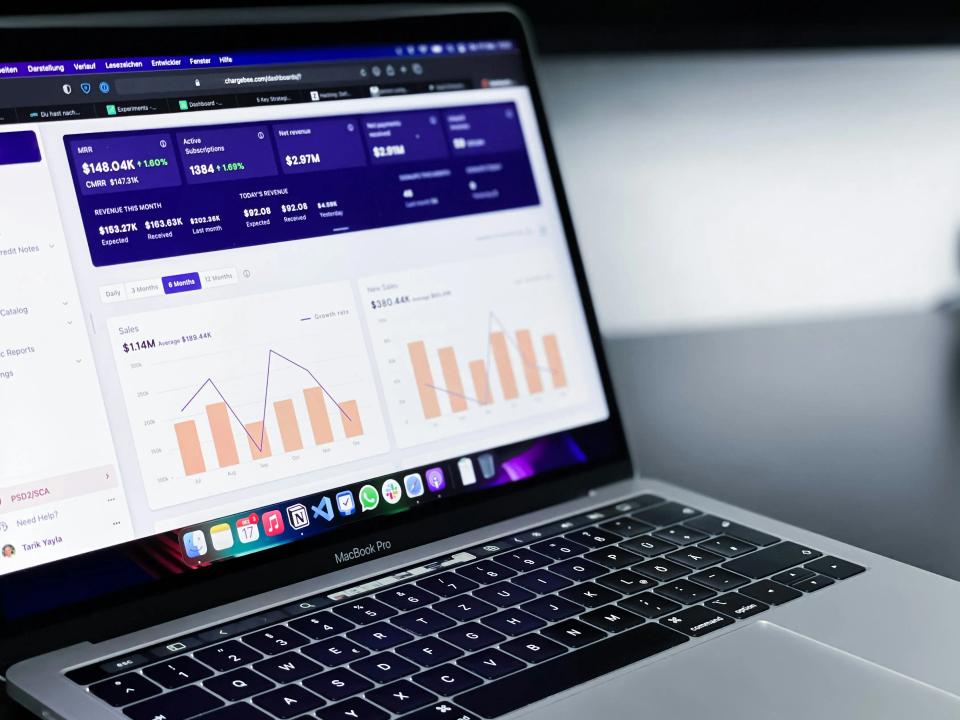Is your digital marketing a leaky bucket? Pouring money into ads, crafting brilliant content, only to see prospects vanish? The culprit might be lurking where you least expect it: your website's technical guts. In the brutal arena of online business, technical optimization isn't just a nice-to-have; it's the bedrock of your survival and your ticket to dominance. Having the right tools isn't just helpful—it's like arming a gladiator for the Colosseum. Are you ready to fight and win?
Website Performance Analysis Tools: Your First Line of Defense
Your website is your 24/7 salesperson, your global storefront. But what if it’s slow, clunky, and chasing potential customers away before they even see your offers? Poor performance kills conversions and sends your rankings plummeting. It's time to stop guessing and start knowing exactly how your site performs.
Google PageSpeed Insights: Hear It From the Source
Want to know what Google thinks of your site's speed? Google PageSpeed Insights is your direct line. This powerful tool dissects your site's performance on both mobile and desktop, offering a clear score and actionable recommendations. It’s like getting a performance review straight from the search giant itself.
The benefits are undeniable: faster load times mean happier users, and Google rewards happy users with higher rankings. A mere one-second delay in page load time can slash conversions by 7%, according to research highlighted by HubSpot. Interpreting results, especially Core Web Vitals, tells you precisely where to focus your efforts for maximum impact.
Don't just stare at the numbers; implement the suggestions. Google PageSpeed Insights gives you a roadmap to a faster site. Follow it, and watch your user engagement and conversion rates climb.
GTmetrix: Deep Dive into Performance Bottlenecks
Ready to go granular? GTmetrix offers a comprehensive suite of tools to analyze your website's speed and identify specific performance bottlenecks. It provides detailed reports, including Performance Scores and Structure Scores, giving you a holistic view of your site’s health. You can even see a visual Waterfall chart showing exactly how long each element takes to load.
Understanding your GTmetrix scores helps you pinpoint issues that might be invisible to the naked eye. Remember, a staggering 53% of mobile users abandon sites that take longer than 3 seconds to load, as Google's research indicates. This tool helps you claw back those precious seconds.
Use GTmetrix to test your site from different locations, on various devices, and even simulate different connection speeds. This isn't just about numbers; it's about understanding the real-world experience of your users. Fix what's broken, and they'll thank you with their business.
SEO Technical Analysis Tools: Uncover What's Holding You Back
A fast site is fantastic, but what if Google can't properly crawl or understand your content? Technical SEO issues can silently sabotage your rankings, making your brilliant content invisible. It's time to shine a light into the dark corners of your website's architecture.
Screaming Frog SEO Spider: Your On-Page Detective
Imagine having a tireless detective that crawls your entire website, just like Googlebot. That's the Screaming Frog SEO Spider. This desktop tool uncovers critical technical SEO issues: broken links, problematic redirects, duplicate content, missing meta descriptions, and so much more.
A thorough technical SEO audit using Screaming Frog can reveal hidden gremlins that are dragging your site down. While specific statistics on direct ranking impact from fixing these errors vary, it's a well-established SEO principle that a technically sound website is favored by search engines. Addressing issues like improper canonicalization or orphaned pages directly impacts how search engines value your content.
Common use cases include pre- and post-site migration checks, regular health audits, and analyzing competitor sites. Don't let technical debt accumulate; use Screaming Frog to keep your site clean, efficient, and search-engine friendly. Your online visibility depends on it.
Ahrefs: Beyond Backlinks to Technical Mastery
While renowned for its backlink analysis, Ahrefs also boasts a formidable Site Audit tool. This feature crawls your website to identify a vast array of technical SEO problems, from HTML tag issues to performance glitches and content quality problems. It’s an all-in-one solution for a healthier, higher-ranking website.
Ahrefs' Site Audit tool can automatically check for over 140 pre-defined SEO issues, according to their own documentation. This continuous monitoring means you can catch and fix problems before they escalate and significantly damage your search performance. Imagine the peace of mind, knowing your site is constantly watched over.
Beyond your own site, Ahrefs allows you to peek under the hood of your competitors. Analyze their technical SEO strengths and weaknesses to find opportunities to outmaneuver them. Knowledge is power, and Ahrefs delivers it in spades.
Security and Monitoring Tools: Fortify Your Digital Fortress
Your website is a valuable asset. Is it protected? In an age of rampant cyber threats, robust security and vigilant monitoring are not optional; they are essential for survival and maintaining user trust.
SSL Checker Tools: The Badge of Trust
An SSL certificate (HTTPS) is no longer a luxury; it's a fundamental requirement. Tools like the SSL Labs SSL Test allow you to verify your SSL certificate's installation and configuration. This ensures encrypted, secure connections between your server and your visitors' browsers.
The benefits are crystal clear: Google confirmed HTTPS as a ranking signal back in 2014, and users actively look for the padlock icon. In fact, GlobalSign reports that 85% of online shoppers will avoid an unsecured website. Implementing SSL correctly builds crucial trust and can give you an edge.
Regularly checking your SSL status ensures it hasn’t expired or developed configuration issues. Don't let a simple oversight compromise your site's security and your users' data. Stay vigilant.
Google Search Console: Your Direct Line to Google's Insights
Google Search Console (GSC) is an indispensable free service offered by Google. It allows you to monitor your site's presence in Google Search results, identify technical issues, and understand how Google sees your website. Think of it as your early warning system.
GSC is invaluable for detecting crawl errors, indexing problems, and even manual actions that could devastate your visibility. As Google itself states, "Google Search Console tools and reports help you measure your site's Search traffic and performance, fix issues, and make your site shine in Google Search results." This direct feedback is priceless.
Furthermore, GSC provides crucial security alerts. If your site is hacked or infected with malware, Google Search Console will often be the first to notify you. This allows for swift action to protect your reputation and your visitors.
Mobile Optimization Tools: Conquer the Small Screen
Your audience isn't chained to a desk; they're on their phones, their tablets, everywhere. If your website fumbles on mobile, you're not just losing visitors; you're losing revenue and relevance. Is your site truly ready for the mobile-first world?
Google's Mobile-Friendly Test: The Official Verdict
Want a quick, authoritative check on your site's mobile manners? Google's Mobile-Friendly Test provides exactly that. Simply enter your URL, and Google will tell you if your page is easy to use on a mobile device.
This tool highlights key metrics like viewport configuration, legible font sizes, and appropriately spaced tap targets. Consider this: Google's research indicates that 61% of users are unlikely to return to a mobile site they had trouble accessing, and 40% will visit a competitor’s site instead. Can you afford that loss?
The test doesn't just point out flaws; it offers optimization recommendations. Heed this advice to ensure your mobile users have a seamless experience. Catering to the dominant mobile audience isn't just smart; it's essential for survival.
BrowserStack: See Your Site Through Every User's Eyes
How does your website really look and function across the staggering array of devices, browsers, and operating systems? Guessing is a fool's errand. BrowserStack lets you test your website on thousands of real mobile and desktop browsers.
Ensuring cross-browser and mobile responsiveness is paramount for reaching your entire potential audience. While specific bug reduction stats vary by project, the ability to test on real devices, as BrowserStack offers, drastically reduces the chances of users encountering frustrating glitches. You can't manually test on every iPhone, Android, or obscure browser version, but BrowserStack can.
Eliminate compatibility issues and usability bugs before your customers find them. A consistent, flawless experience across all platforms builds confidence and keeps users engaged. Don't let device fragmentation dictate your success.
Site Speed Optimization Tools: Unleash Blazing Fast Performance
We've analyzed speed; now it's time to actively enhance it. Every millisecond counts in the race for user attention and conversions. These tools don't just diagnose; they provide the cure for sluggish websites.
WP Rocket (for WordPress): Ignite Your WordPress Site
If your digital empire is built on WordPress, then WP Rocket is your secret weapon for incredible speed. This premium caching plugin is renowned for its ease of use and powerful features, designed to make your WordPress site fly. It’s often hailed by WordPress experts as a top-tier solution for performance.
WP Rocket offers advanced caching, file minification (HTML, CSS, JS), lazy loading for images and videos, database optimization, and much more. The performance benefits are often dramatic, with users reporting significant improvements in load times and Core Web Vitals scores. Many users see their page load time decrease substantially, sometimes by 60% or more, as claimed by WP Rocket.
The beauty of WP Rocket lies in its simplicity. Even if you're not a coding wizard, you can configure it quickly and see instant results. Stop letting a slow WordPress site bleed conversions; give it the rocket fuel it deserves.
Cloudflare: Global Speed and Ironclad Security
Imagine your website's content being served to visitors from a server physically close to them, no matter where they are in the world. That's the power of a Content Delivery Network (CDN), and Cloudflare is a leading provider. But it offers so much more than just a CDN.
Websites leveraging a CDN like Cloudflare can experience significantly faster load times, often seeing reductions of 50% or more. Cloudflare also provides robust security features, including DDoS attack mitigation and a Web Application Firewall (WAF), shielding your site from malicious threats. It’s like having a global bodyguard and a supercharger for your website, all in one.
Beyond its CDN and security, Cloudflare offers a suite of performance optimization tools, such as image optimization (Polish) and automatic minification. It’s a comprehensive solution for any website owner serious about speed, security, and reliability.
Analytics and Tracking Tools: Measure What Matters
You've tweaked, optimized, and fortified. But how do you truly know if your efforts are paying off? Without robust analytics and tracking, you're flying blind. These tools provide the critical data and insights to measure success and identify areas for further improvement.
Google Analytics: The Foundation of Digital Insight
Google Analytics is the undisputed king of web analytics, and for good reason. It provides a wealth of data about your website traffic, user behavior, conversions, and much more. A correct technical setup, including proper goal tracking and event monitoring, is crucial for unlocking its full potential.
Within Google Analytics, you can monitor site speed reports and track how page load times impact user engagement and bounce rates. Businesses that effectively use data-driven insights from tools like Google Analytics often report significant revenue increases; Boston Consulting Group found such personalization can lift revenues by 6-10%. This data helps you connect your technical optimizations directly to business outcomes.
Track user navigation paths, identify high-exit pages, and understand how different traffic sources perform. Google Analytics turns raw data into actionable intelligence, empowering you to make smarter marketing decisions. It's used by over 29 million websites for a reason.
Hotjar: See Your Website Through Your Users' Eyes
Numbers tell part of the story, but what if you could see how users actually interact with your site? Hotjar provides exactly that with tools like heatmaps, session recordings, and conversion funnel analysis. It offers the qualitative insights that quantitative data alone can't provide.
Heatmaps visually show where users click, move their mouse, and scroll, revealing what grabs their attention and what gets ignored. Session recordings let you watch anonymized playback of real user journeys, uncovering pain points and usability issues. Hotjar case studies often highlight significant conversion lifts when businesses use these insights to fix friction points.
Implementing Hotjar is typically as simple as adding a small tracking script to your website. The insights gained can be invaluable for understanding why users behave the way they do, allowing you to optimize for a truly user-centric experience.
Best Practices for Tool Implementation: Wield Your Arsenal Wisely
Simply acquiring these tools isn't enough; you must wield them strategically. Effective implementation and consistent usage are key to unlocking their true power and achieving lasting digital marketing success. Don't let your powerful new tools gather digital dust.
Think about integration. Many of these tools can work together, sharing data and insights to give you a more holistic view of your technical performance. For example, insights from Google Search Console can inform your Ahrefs audits, and speed improvements measured by GTmetrix should correlate with better user engagement in Google Analytics.
Establish regular monitoring schedules. Technical SEO and website performance aren't "set it and forget it" tasks. Regular website audits are crucial for identifying and fixing issues before they escalate, ensuring your site remains in peak condition. This ongoing vigilance is the price of online dominance.
Finally, allocate the necessary resources—both time and, if applicable, budget. Empower your team (or yourself) to learn these tools and dedicate time to acting on their recommendations. Prioritize fixes based on potential impact to ensure you're always working on what matters most.
Cost Considerations: Investing in Your Digital Future
The question of cost inevitably arises. "Do I need to pay for these tools?" The answer is nuanced, but the underlying principle is to view them as investments, not expenses. Your digital success is worth investing in.
Many incredibly powerful tools are free, including Google PageSpeed Insights, Google Search Console, and Google's Mobile-Friendly Test. Google Analytics also offers a robust free version. These should be the absolute starting point for any digital marketer serious about technical optimization.
Paid tools like Ahrefs, Screaming Frog (for larger sites), WP Rocket, BrowserStack, and Hotjar (for advanced features) often provide deeper insights, more automation, and dedicated support. When considering a paid tool, conduct an ROI analysis: Will the time saved, the errors prevented, or the conversions gained outweigh the subscription cost? Often, investing in the right marketing technology yields a significant return, sometimes many times over.
Plan your budget accordingly. Start with the free essentials, then strategically add paid tools as your needs and budget grow. The cost of not optimizing—lost traffic, poor conversions, damaged reputation—is almost always far greater than the cost of the right tools.
Conclusion: Your Path to Technical Excellence Starts Now
We've journeyed through the essential arsenal of technical optimization tools. From analyzing website speed with Google PageSpeed Insights and GTmetrix, to conducting deep SEO audits with Screaming Frog and Ahrefs, and ensuring robust security and mobile-friendliness – these tools are your keys to unlocking superior digital performance. You now know what it takes to build a faster, more secure, and higher-ranking online presence.
Your implementation roadmap is clear: begin with a comprehensive audit using these tools. Prioritize the most critical issues, implement the recommended fixes, and then establish a routine of ongoing monitoring and iteration. Don't try to boil the ocean; take consistent, focused steps towards technical excellence.
The next step is yours. Stop leaving your digital success to chance. Embrace these technical optimization tools, transform your website from a liability into a high-performing asset, and watch your marketing efforts finally deliver the results you crave. Your competitors are already hard at work; can you afford to be left behind?













